Abstract
The activity of cefamandole and cefuroxime against oxacillin-resistant staphylococcus epidermidis was studied in vitro to determine whether there was any relationship between oxacillin resistance phenotypes and cephalosporin activity. Oxacillin resistance phenotypes were determined by efficiency-of-plating studies on Mueller-Hinton agar containing oxacillin, with and without NaCl, and incubated at 30 and 35 degrees C. On the basis of MIC and MBC determinations, cefamandole was more active than cefuroxime against oxacillin-resistant S. epidermidis. Although temperature had minimal effect on the activity of either cefamandole or cefuroxime, NaCl significantly decreased the activity of cefuroxime but not of cefamandole. Neither cephalosporin consistently produced greater than or equal to 99.9% bactericidal activity within 24 h in timed killing-curve studies. No consistent relationship was observed between cefamandole or cefuroxime activity and oxacillin resistance phenotype.
Full text
PDF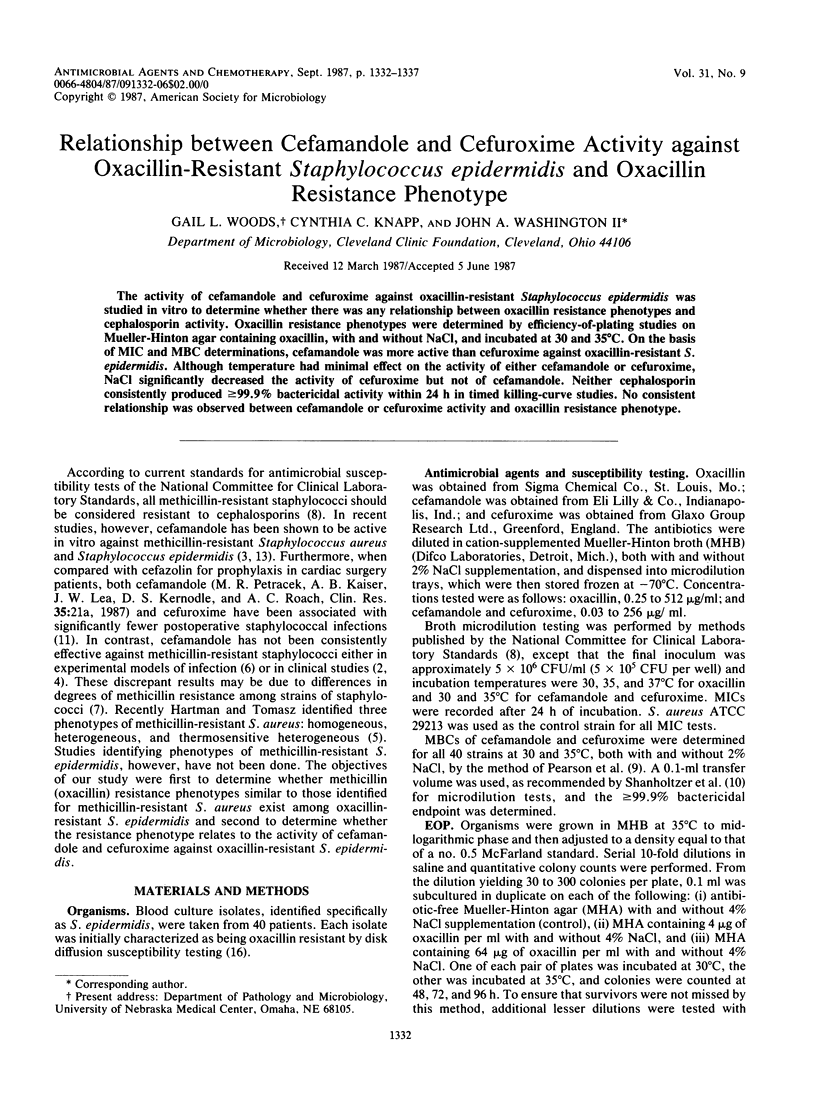
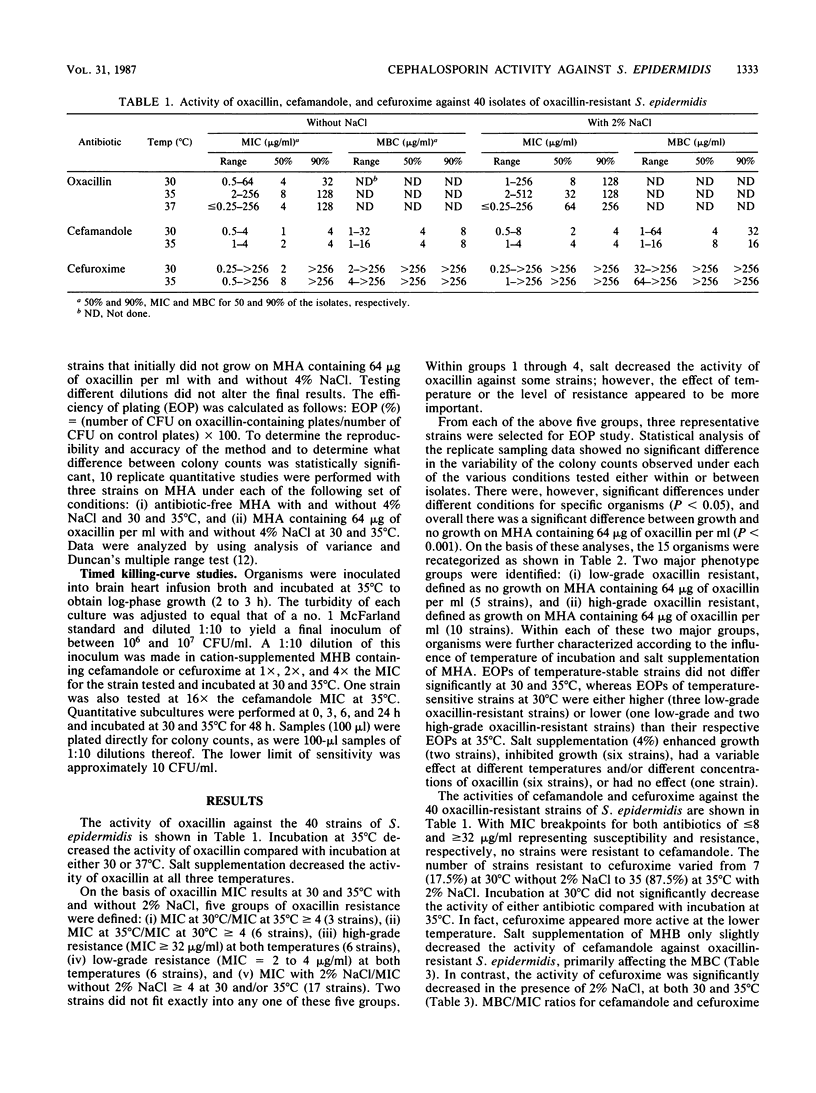
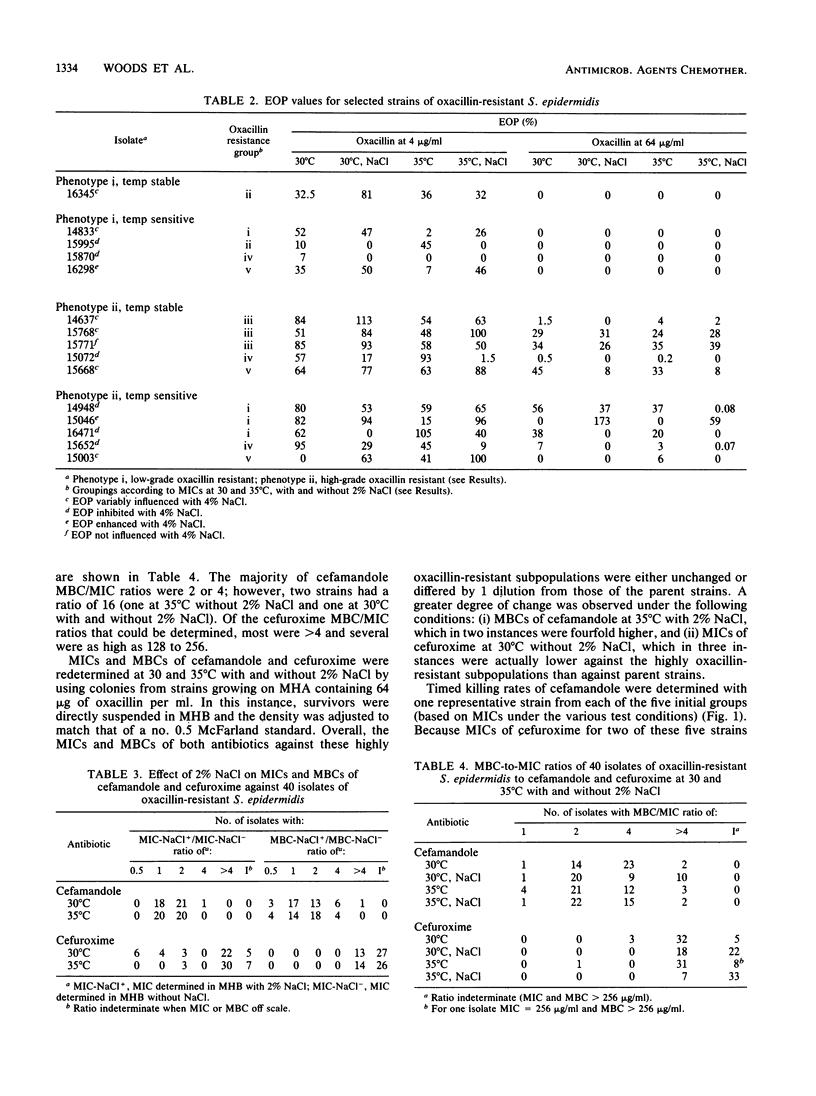
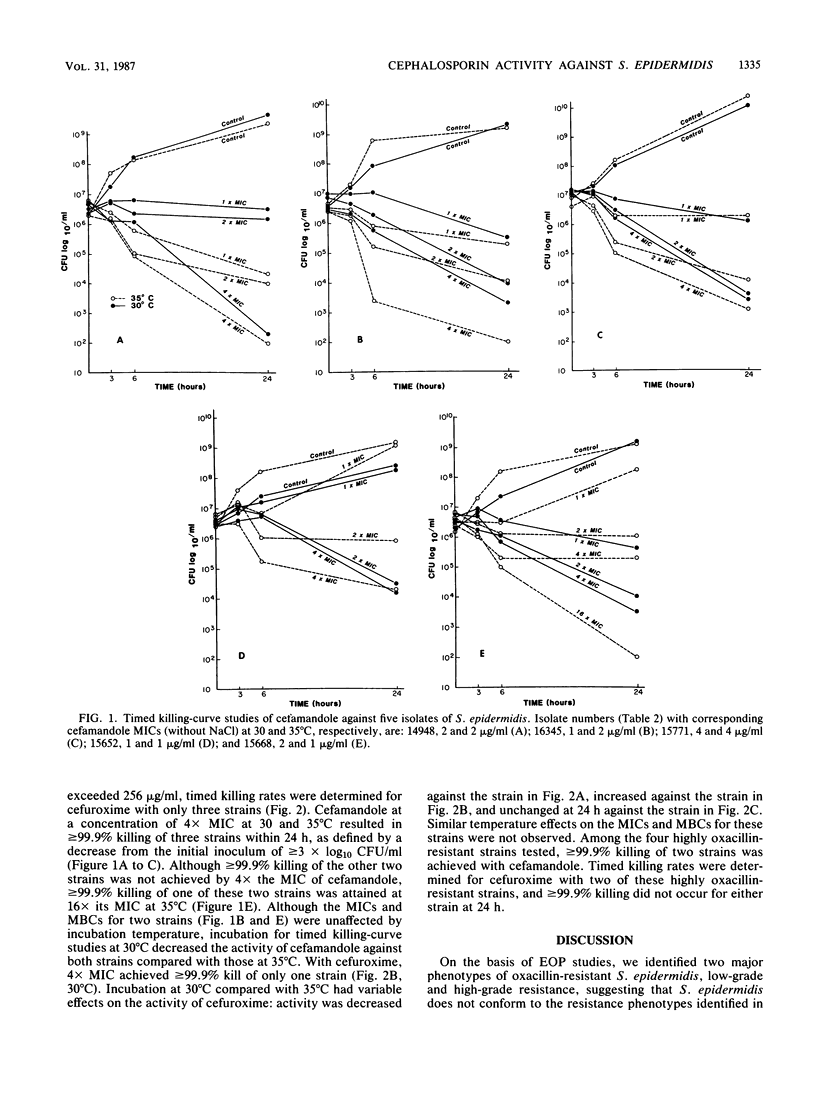
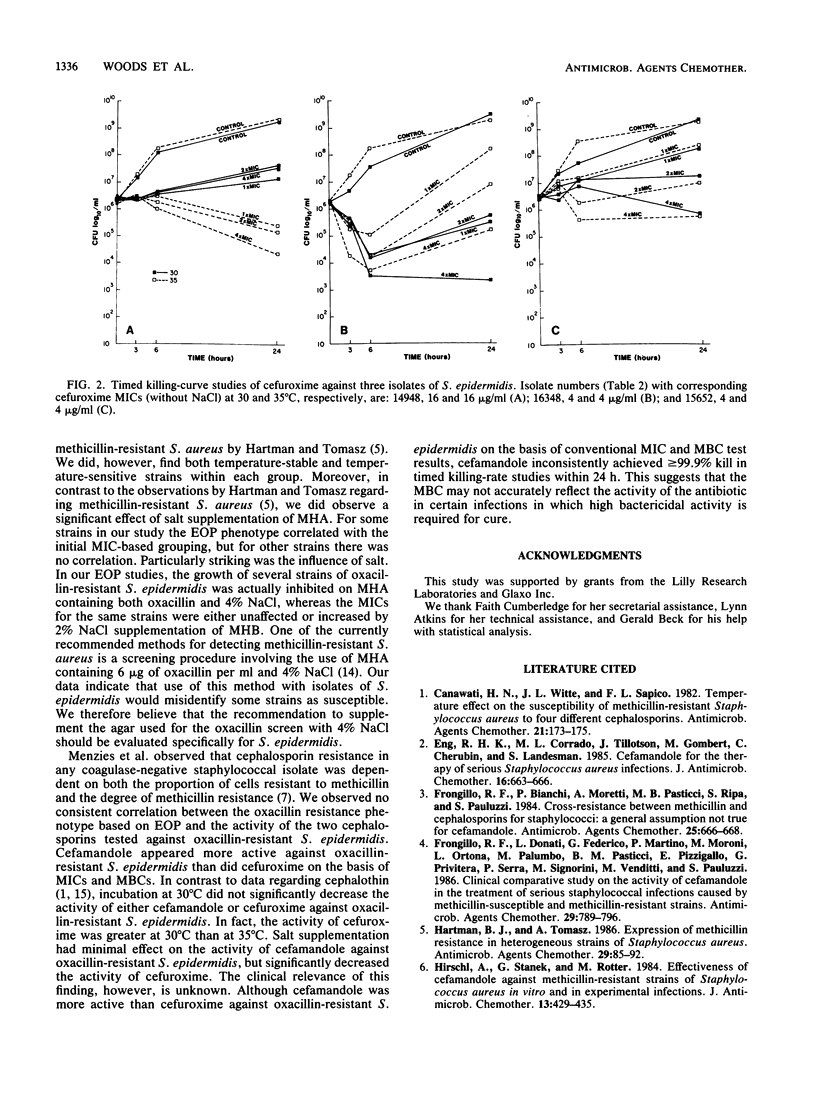
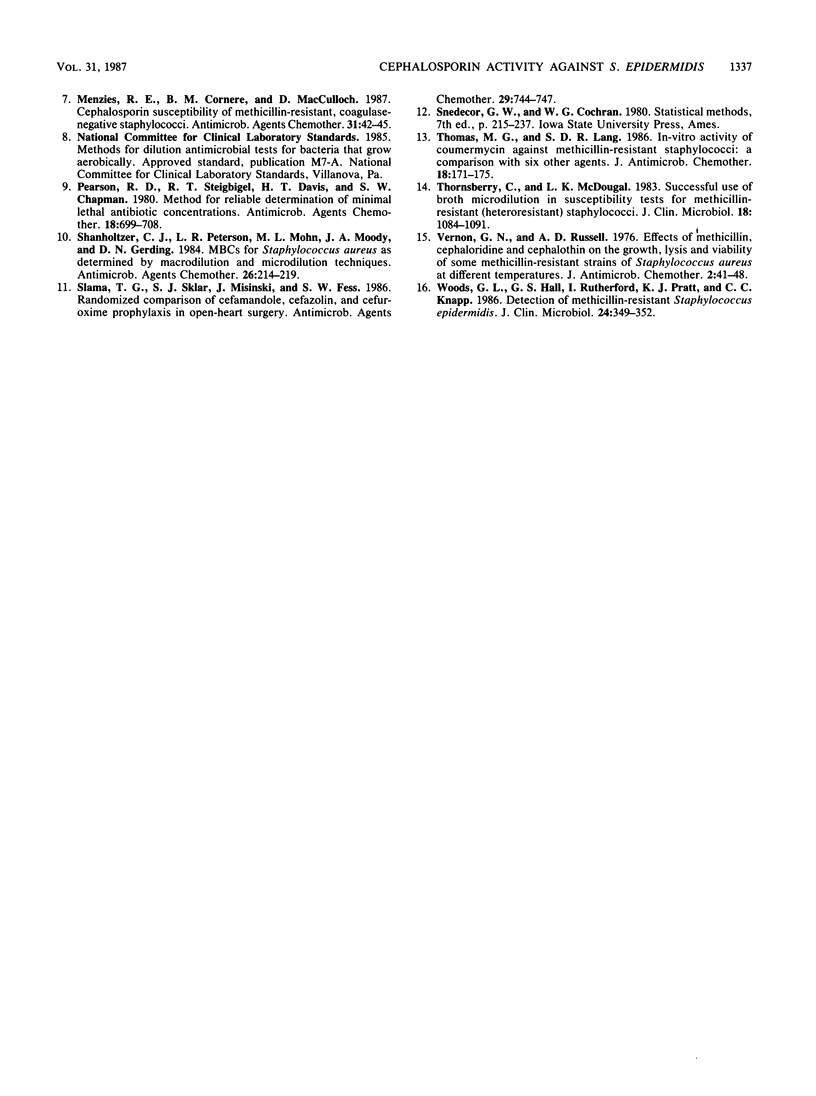
Selected References
These references are in PubMed. This may not be the complete list of references from this article.
- Canawati H. N., Witte J. L., Sapico F. L. Temperature effect on the susceptibility of methicillin-resistant Staphylococcus aureus to four different cephalosporins. Antimicrob Agents Chemother. 1982 Jan;21(1):173–175. doi: 10.1128/aac.21.1.173. [DOI] [PMC free article] [PubMed] [Google Scholar]
- Eng R. H., Corrado M. L., Tillotson J., Gombert M., Cherubin C., Landesman S. Cefamandole for the therapy of serious Staphylococcus aureus infections. J Antimicrob Chemother. 1985 Nov;16(5):663–666. doi: 10.1093/jac/16.5.663. [DOI] [PubMed] [Google Scholar]
- Frongillo R. F., Bianchi P., Moretti A., Pasticci M. B., Ripa S., Pauluzzi S. Cross-resistance between methicillin and cephalosporins for staphylococci: a general assumption not true for cefamandole. Antimicrob Agents Chemother. 1984 May;25(5):666–668. doi: 10.1128/aac.25.5.666. [DOI] [PMC free article] [PubMed] [Google Scholar]
- Frongillo R. F., Donati L., Federico G., Martino P., Moroni M., Ortona L., Palumbo M., Pasticci B. M., Pizzigallo E., Privitera G. Clinical comparative study on the activity of cefamandole in the treatment of serious staphylococcal infections caused by methicillin-susceptible and methicillin-resistant strains. Antimicrob Agents Chemother. 1986 May;29(5):789–796. doi: 10.1128/aac.29.5.789. [DOI] [PMC free article] [PubMed] [Google Scholar]
- Hartman B. J., Tomasz A. Expression of methicillin resistance in heterogeneous strains of Staphylococcus aureus. Antimicrob Agents Chemother. 1986 Jan;29(1):85–92. doi: 10.1128/aac.29.1.85. [DOI] [PMC free article] [PubMed] [Google Scholar]
- Hirschl A., Stanek G., Rotter M. Effectiveness of cefamandole against methicillin-resistant strains of Staphylococcus aureus in vitro and in experimental infections. J Antimicrob Chemother. 1984 May;13(5):429–435. doi: 10.1093/jac/13.5.429. [DOI] [PubMed] [Google Scholar]
- Menzies R. E., Cornere B. M., MacCulloch D. Cephalosporin susceptibility of methicillin-resistant, coagulase-negative staphylococci. Antimicrob Agents Chemother. 1987 Jan;31(1):42–45. doi: 10.1128/aac.31.1.42. [DOI] [PMC free article] [PubMed] [Google Scholar]
- Pearson R. D., Steigbigel R. T., Davis H. T., Chapman S. W. Method of reliable determination of minimal lethal antibiotic concentrations. Antimicrob Agents Chemother. 1980 Nov;18(5):699–708. doi: 10.1128/aac.18.5.699. [DOI] [PMC free article] [PubMed] [Google Scholar]
- Shanholtzer C. J., Peterson L. R., Mohn M. L., Moody J. A., Gerding D. N. MBCs for Staphylococcus aureus as determined by macrodilution and microdilution techniques. Antimicrob Agents Chemother. 1984 Aug;26(2):214–219. doi: 10.1128/aac.26.2.214. [DOI] [PMC free article] [PubMed] [Google Scholar]
- Slama T. G., Sklar S. J., Misinski J., Fess S. W. Randomized comparison of cefamandole, cefazolin, and cefuroxime prophylaxis in open-heart surgery. Antimicrob Agents Chemother. 1986 May;29(5):744–747. doi: 10.1128/aac.29.5.744. [DOI] [PMC free article] [PubMed] [Google Scholar]
- Thomas M. G., Lang S. D. In-vitro activity of coumermycin against methicillin-resistant staphylococci: a comparison with six other agents. J Antimicrob Chemother. 1986 Aug;18(2):171–175. doi: 10.1093/jac/18.2.171. [DOI] [PubMed] [Google Scholar]
- Thornsberry C., McDougal L. K. Successful use of broth microdilution in susceptibility tests for methicillin-resistant (heteroresistant) staphylococci. J Clin Microbiol. 1983 Nov;18(5):1084–1091. doi: 10.1128/jcm.18.5.1084-1091.1983. [DOI] [PMC free article] [PubMed] [Google Scholar]
- Vernon G. N., Russell A. D. Effects of methicillin, cephaloridine and cephalothin on the growth, lysis and viability of some methicillin-resistant strains of Staphylococcus aureus at different temperatures. J Antimicrob Chemother. 1976 Mar;2(1):41–48. doi: 10.1093/jac/2.1.41. [DOI] [PubMed] [Google Scholar]
- Woods G. L., Hall G. S., Rutherford I., Pratt K. J., Knapp C. C. Detection of methicillin-resistant Staphylococcus epidermidis. J Clin Microbiol. 1986 Sep;24(3):349–352. doi: 10.1128/jcm.24.3.349-352.1986. [DOI] [PMC free article] [PubMed] [Google Scholar]


